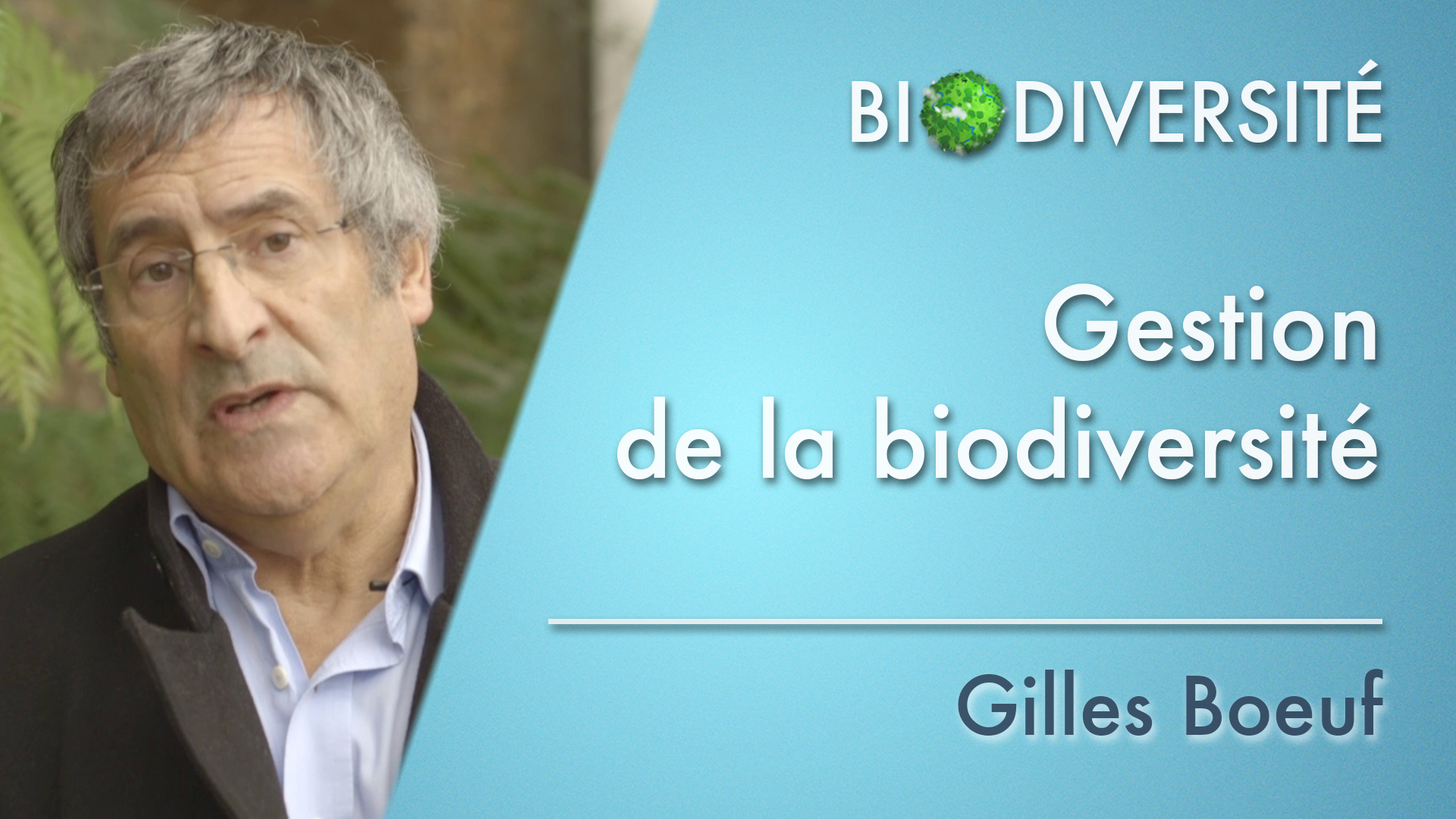Notice
EN-9. The future of biodiversity: the need of managing the biological evolution
- document 1 document 2 document 3
- niveau 1 niveau 2 niveau 3
Descriptif
On the basis of a reminder of the main factors supporting the biological evolution, Alexandre Robert presents some major and future orientations of the strategies of biodiversity preservation: the preservation of the adaptation genetic abilities of species, the modelling of the future distributions of species and communities, or the possibility to assist the migrations of some species.
Dans la même collection
-
EN-3. Biodiversity management strategies facing direct pressures
CouvetDenisDenis Couvet proposes several strategies of biodiversity management, to meet the direct pressures the biodiversity is subjected to (destruction, overexploitation, ecotoxicity, invasive species,
-
EN-6. Biomonitoring
CasasStellioStellio Casas presents the biomonitoring. This tool of biodiversity management can be used for the different biological levels of the life. It leads to the identification of bioaccumulators,
-
EN-1. Different issues of protecting biodiversity
CouvetDenisDenis Couvet presents the reasons that the biodiversity preservation makes sense: its inherent value, the functionality of ecosystems, and its progressive potential. In a second phase, he proposes a
-
EN-4. Strategies for protection of threatened species
SarrazinFrançoisFrançois Sarrazin focuses on the different strategies which can be used to preserve the endangered species. He firstly comes back to some factors of risk (climate, extinction, vortex), and to some
-
EN-7. Participatory sciences and biodiversity management
FontaineColinColin Fontaine presents the interest and the functioning of the participatory sciences measures for the biodiversity. He evidences their benefits, for the scientists as well as for the observers, and
-
EN-2. Biodiversity and ecosystem services
CouvetDenisOn the basis of the 2005 Millenium Ecosystem Assessment, Denis Couvet defines the main categories of ecosystem services: support services, supply services, control services and cultural services. He
-
EN-5. Ordinary biodiversity: issues, protection
CouvetDenisDenis Couvet talks about the ordinary biodiversity, that is the biodiversity around us, which represents 80% of the world species. He proposes an overview of the condition of this biodiversity,
-
Managing biodiversity - Introduction
Ecosystem services are today a very used approach to characterise the life contributions to the well-being of the humanity. Many strategies are deployed to preserve this biodiversity. But in a context
-
EN-8. How can society and biodiversity be reconcilied
CouvetDenisDenis Couvet presents an analysis framework which enables to better reconcile the human development of the biodiversity preservation. He explains the conditions of such a perspective and shows the
-
5. Biodiversité ordinaire : enjeux, préservation
CouvetDenisDenis Couvet s'intéresse à la biodiversité ordinaire, à savoir celle qui nous entoure et qui représente 80% des espèces dans le monde. Il propose un aperçu de l'état de cette biodiversité, en lien
-
8. (Ré)concilier société et biodiversité
CouvetDenisDenis Couvet présente un cadre d'analyse permettant de mieux concilier le développement humain et la préservation de la biodiversité. Il explique les conditions d'une telle perspective et montre les
-
3. Stratégies de gestion de la biodiversité face aux pressions directes
CouvetDenisDenis Couvet propose plusieurs stratégies de gestion de la biodiversité, en réponse aux pressions directes qu'elle subit (destruction, surexploitation, écotoxicité, espèces invasives, changement
Avec les mêmes intervenants et intervenantes
-
9. Biodiversité du futur : gérer l'évolution biologique
RobertAlexandreSur la base d'un rappel des grands facteurs qui soutiennent l'évolution biologique, Alexandre Robert présente quelques orientations majeures et futures des stratégies de conservation de la














